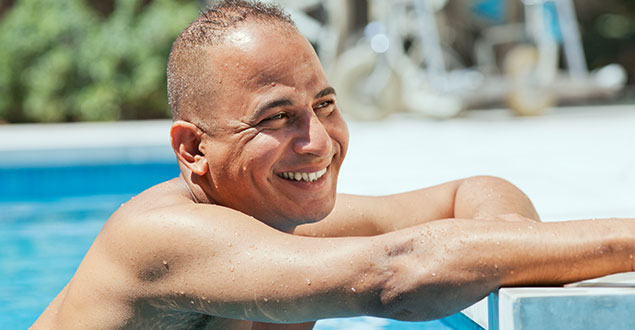Some physical activities can cause you to leak more or make you feel the urge to go more often. Therefore you might feel that it’s safer to simply avoid sports and other physical activities. But the fear of increased bladder issues should not hold you back from exercising – quite the contrary.
When you have a medical condition it is important to have a strong body and to be in the best possible shape. If you’re in a poor physical condition, your bladder issues may get worse – or you may experience them as being worse, because you generally feel poorly. Being overweight and constipation can make bladder problems worse and a large abdomen (belly) can also make it more difficult to catheterise – especially if you are a woman.

What sports activities are suitable for you?
The bouncing and pounding movement of running might cause leakage.
Try power walking (fast walking).
Heavy lifting (using hand weights or other lifting equipment) can put too much pressure on your bladder.
Instead: switch to lighter weights instead and exceed the number of lifts or experiment with doing them slower or faster.
Swimming is ideal because it can be done by most people regardless of how fit or mobile they are
There are also plenty of sports that can be done sitting in a wheelchair, also competitive sports. Online research can help you find one of the many organisations who specialise in sport for wheelchair users.
There are many good health reasons that you should exercise – not to mention if you find activities that are fun and use the occasion to socialise with others.
Bladder training exercises
Pelvic floor exercise - also called Kegels - is the exercise to improve bladder management. Do it everyday, and you will feel the difference. If you should pick one physical exercise to do everyday - this is the one.